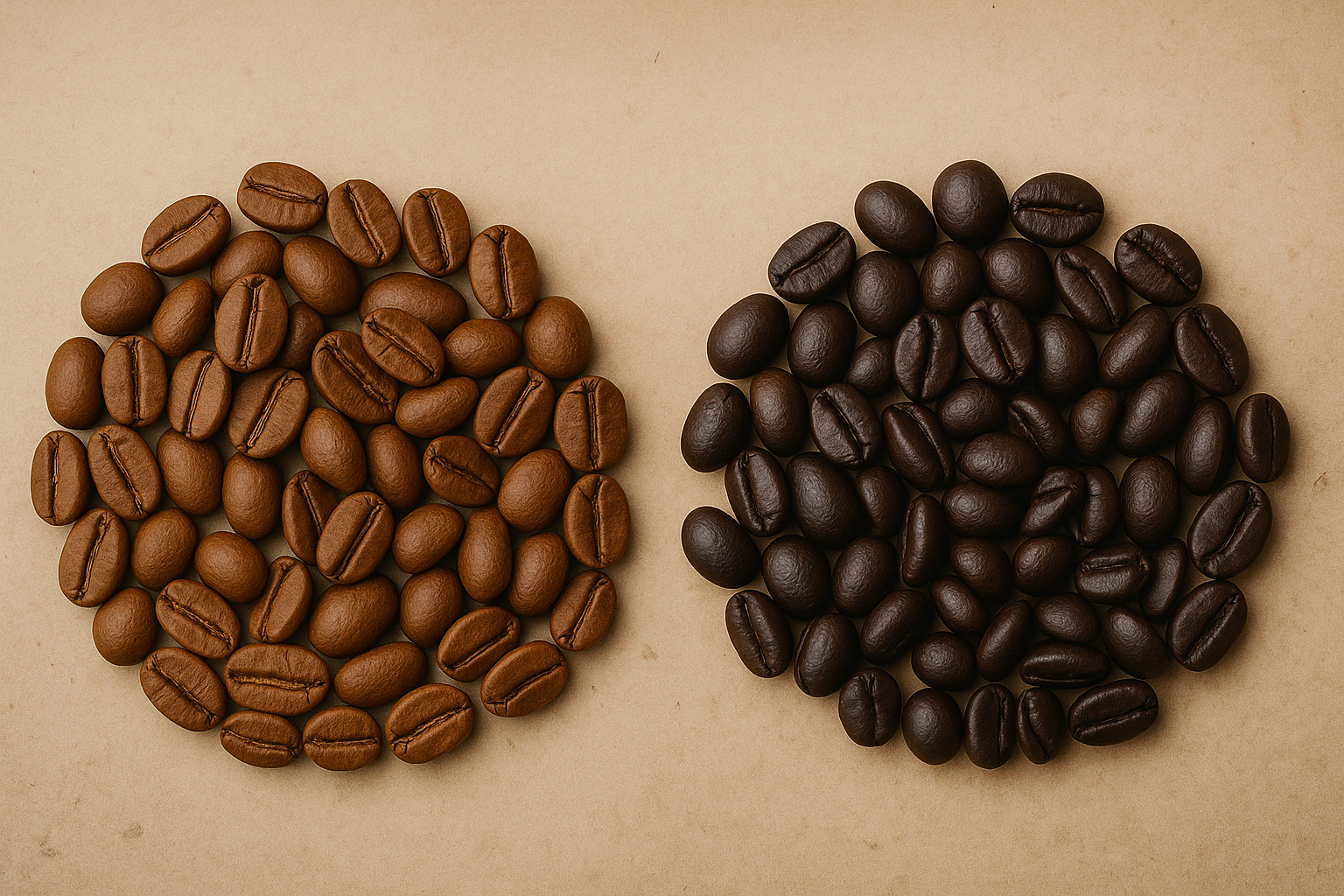When standing in the coffee aisle or browsing specialty roasters online, you’ve probably seen labels like “100% Arabica” or “contains Robusta.” But what do these terms really mean? And how do they affect the flavor, quality, and even price of your coffee?
In this guide, we’ll explore the key differences between Arabica and Robusta coffee beans, helping you understand which one suits your taste preferences and brewing habits best.
What Are Arabica and Robusta Coffee Beans?
Coffee beans come from the seeds of the Coffea plant, and among the dozens of species, two dominate the global market:
- Coffea arabica (Arabica)
- Coffea canephora (Robusta)
Together, they make up over 95% of the world’s coffee production.
Let’s break down each variety in detail.
Arabica Coffee: The Premium Choice
Origin and Growing Conditions
Arabica beans are believed to be the first coffee species ever cultivated, originally discovered in Ethiopia. They are now primarily grown in high-altitude regions with cool temperatures, such as parts of Latin America, East Africa, and Southeast Asia.
Arabica plants are more delicate, requiring specific climate conditions and care, which makes their cultivation more labor-intensive and costly.
Flavor Profile
Arabica coffee is prized for its:
- Delicate acidity
- Smooth mouthfeel
- Complex flavor notes, including fruit, chocolate, florals, and nuts
It contains less caffeine than Robusta — around 1.2–1.5% — which contributes to its smoother and often sweeter taste.
Appearance
- Oval-shaped beans
- Curved crease in the center
- Typically lighter in color when roasted lightly
Robusta Coffee: The Bold and Budget-Friendly Option
Origin and Growing Conditions
Robusta was first identified in Central Africa and is commonly grown in lower-altitude, warmer climates — especially in Vietnam, Brazil, and parts of Africa and Indonesia.
It’s a hardier plant, more resistant to pests and disease due to its higher caffeine content (around 2.2–2.7%). This resilience makes it cheaper and easier to produce.
Flavor Profile
Robusta is known for:
- Stronger, more bitter taste
- Earthy or woody notes
- More crema in espresso shots
It’s often described as having a grainy or rubbery quality when poorly processed, but high-quality Robusta can offer chocolate and nutty notes with a bold finish.
Appearance
- Rounder, smaller beans
- Straighter crease
- Often darker and more uniform after roasting
Key Differences at a Glance
| Feature | Arabica | Robusta |
|---|---|---|
| Origin | Ethiopia | Central Africa |
| Altitude | High (600–2000m) | Low (0–800m) |
| Caffeine | 1.2–1.5% | 2.2–2.7% |
| Taste | Sweet, fruity, complex | Bitter, earthy, bold |
| Body | Light to medium | Full-bodied |
| Acidity | High | Low |
| Price | Higher | Lower |
| Common Use | Specialty coffee | Instant coffee, espresso blends |
Which Coffee Should You Choose?
The choice between Arabica and Robusta depends on your taste preferences, budget, and how you brew your coffee.
Choose Arabica If:
- You enjoy nuanced, sweet, or fruity flavors
- You’re willing to pay more for quality
- You brew pour-over, drip, or cold brew and want clean, complex cups
- You’re sensitive to caffeine
Choose Robusta If:
- You like strong, bold, and bitter flavors
- You make espresso and want a rich crema
- You want a higher caffeine kick
- You’re buying coffee for blends or instant use
- You’re on a tighter budget
Can Arabica and Robusta Be Mixed?
Yes — and many commercial espresso blends are exactly that.
By blending Arabica with a touch of Robusta, roasters can create:
- A richer crema in espresso shots
- A stronger flavor that holds up well in milk-based drinks
- Lower costs without sacrificing too much flavor
A common blend ratio might be 80% Arabica / 20% Robusta, offering the best of both worlds.
The Role of Roast Level
It’s worth noting that roast level can impact the taste of both Arabica and Robusta. For example:
- A dark-roasted Arabica may taste bolder and more bitter, similar to Robusta
- A light-roasted Robusta may reveal subtler flavors if it’s high-quality
Always consider origin, processing method, and roast level when choosing a coffee — not just the bean type.
Quality Matters More Than Species
While Arabica is generally considered higher quality, that’s not always the case.
- Poorly grown or stored Arabica can taste flat or sour
- High-quality Robusta (such as those from India or Uganda) can deliver satisfying depth
What truly matters is how the coffee was cultivated, harvested, processed, and roasted.
Sustainability and Ethical Sourcing
Arabica’s fragility makes it vulnerable to climate change. Its narrow growing conditions are being challenged by rising temperatures and unpredictable weather. In contrast, Robusta’s resilience might play a key role in the future of sustainable coffee farming.
When choosing coffee, consider supporting ethical brands that:
- Pay fair wages to farmers
- Promote sustainable farming practices
- Invest in long-term environmental solutions
This ensures better coffee for you — and a better life for those who grow it.
Final Thoughts: Arabica vs. Robusta — Which One Wins?
There’s no one-size-fits-all answer. Both Arabica and Robusta have their strengths and roles to play in the coffee world.
If you’re after elegance, complexity, and smoothness — go with Arabica.
If you prefer boldness, intensity, and crema — give Robusta or blends a try.
Or better yet, explore both. Try single-origin Arabicas from Ethiopia and Brazil, and then test a Robusta-forward espresso blend. The more you taste, the more you’ll understand what your perfect cup truly is.
